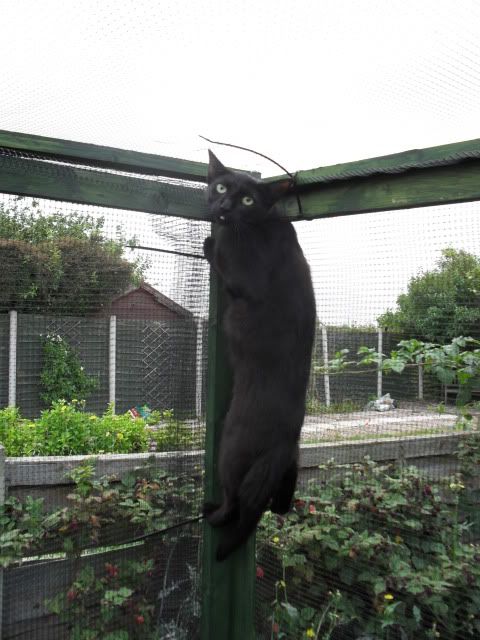Hi
I am brand new to chickens and currently have a count of 1! He's still living with his hatcher until I get his coop built and some wives for him (will be end of Feb/beginning March)
this is him, he's around 8-10 months old and a Leghorn apparently?

Currently called Leggy but thinking of calling him Col. Sanders or The Colonel for short.
My brothers are coming to build my coop for me in Feb - I have a lot of bits of wood/pallets at the allotment plus a good supply of mesh.
One question is - we don't have much of an issue with red mite here - or other types - but is it safe/ a good idea to paint the inside of the coop with a 'plastikote' type paint to give a plastic-y finish to make it less hospitable to parasites? also easier cleaning (several coats and sealed)
This is the coop plan I've drawn for what wood etc I have available

Larger size at http://farm4.staticflickr.com/3666/12049777615_0b305f8c56_o.jpg

Larger size at http://farm3.staticflickr.com/2872/12050632766_e37e081f75_o.jpg
I plan on getting The Col. 4 wives and then next year upgrading them to a bigger coop and using this one as a 'broody' coop and run. In mean time this will have a larger (at least 10ft x 10-15ft) pen in addition to the secure run for grazing etc - the secure run is for bad weather/if I am going out for the full day and can't check on them/give a sheltered place to hang the feeder etc
Oh a bit about me outside the bird plans.... I'm 29, out of work due to disability but attempting to start my own business in stylish custom cat furniture and writing a series of kids books.
I am brand new to chickens and currently have a count of 1! He's still living with his hatcher until I get his coop built and some wives for him (will be end of Feb/beginning March)
this is him, he's around 8-10 months old and a Leghorn apparently?

Currently called Leggy but thinking of calling him Col. Sanders or The Colonel for short.
My brothers are coming to build my coop for me in Feb - I have a lot of bits of wood/pallets at the allotment plus a good supply of mesh.
One question is - we don't have much of an issue with red mite here - or other types - but is it safe/ a good idea to paint the inside of the coop with a 'plastikote' type paint to give a plastic-y finish to make it less hospitable to parasites? also easier cleaning (several coats and sealed)
This is the coop plan I've drawn for what wood etc I have available

Larger size at http://farm4.staticflickr.com/3666/12049777615_0b305f8c56_o.jpg

Larger size at http://farm3.staticflickr.com/2872/12050632766_e37e081f75_o.jpg
I plan on getting The Col. 4 wives and then next year upgrading them to a bigger coop and using this one as a 'broody' coop and run. In mean time this will have a larger (at least 10ft x 10-15ft) pen in addition to the secure run for grazing etc - the secure run is for bad weather/if I am going out for the full day and can't check on them/give a sheltered place to hang the feeder etc
Oh a bit about me outside the bird plans.... I'm 29, out of work due to disability but attempting to start my own business in stylish custom cat furniture and writing a series of kids books.

